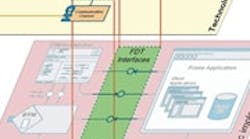By Ian Verhappen, P.Eng.
As recently reported by the FDT Group in May 2009, FDT Technology known as IEC 62453 has gained international standard approval by the International Electrotechnical Committee (IEC). The FDT specification unanimously passed the vote of the international standardization community represented by 26 national committees with the addition of eight more countries voluntarily approving all parts of the FDT specification. ARC Advisory Group Research Director Wil Chin commented, “The formal approval as an IEC standard coupled with the adoption by virtually all automation suppliers will accelerate the already robust adoption of FDT Technology in the process, hybrid and discrete industries”.
What is the process behind achieving IEC Standard approval?
The steps to become a recognized international standard in the world today are rigorous. With strong industry support from both automation users and suppliers, the FDT Group and participating countries worked diligently to achieve standardization in a timely manner.
To become an IEC standard, the document must first be prepared by the sponsoring organization which must be recognized as a Standards Development Organization (SDO), such as ISA or IEEE in the United States. Once developed by the SDO, it is submitted to the country’s standards body. In the United States, the standards body is ANSI (American National Standards Institute), who is the member of the global standards organizations, such as the IEC. Once a document is submitted and accepted by the IEC, each country wishing to participate in the development of the standard must have its own committee to review the draft work in progress.
Once a standard has been adopted by the IEC, it then moves into a “maintenance program,” which means that it needs to be reviewed and ratified on a five-year cycle. This follow-up stage not only affirms the standard is still relevant, but it also allows changes to the technology to be captured and included during that period.
How does this affect me here in the Americas?
The ISA as the standards body recognized by ANSI in the United States has formed Standards Committee ISA103 “Field Device Tool Interface” as the core of the U.S. Technical Advisory Group (TAG) to IEC SC65E and to assist the TAG to select experts from the U.S. The ISA103 committee will reaffirm the standard for use in the United States, at which time it will then be an ISA/ANSI standard and thus part of the U.S. standards catalogue.
To review the objectives of the ISA103 working group and or to join the group to contribute to the development of the standard with ISA, please visit www.isa.org/isa103.
End-user confidence is gained with IEC approval
With the global acceptance of FDT Technology, “End users can now confidently use FDT Technology knowing it has obtained overwhelming endorsement of the international community,” says Klaus-Peter Lindner, Vice President for Associations & Standards of the FDT Group. He further emphasizes the importance of this event, stating, “Only an international standard known as a “norm” assures users long-term openness, allowing free choice of FDT-based products. If each device vendor uses the latest technological developments for the functionality in their instruments, we can be sure that all device features and their complete mapping in DCS and asset management systems are implemented. This is the only way to make the benefits for the user reality and to avoid filtering them by proprietary integration technologies.” As time moves on, regular updates will be made to the specifications to keep the technology fine-tuned as device, control system, information and integration technologies evolve. With all this said and done, the FDT Group has achieved a significant milestone. Congratulations to the FDT Group!
For questions on this article or the technology, please email [email protected].
Ian Verhappen, P.Eng. is an ISA Fellow, ISA Certified Automation Professional, a recognized authority on FOUNDATION fieldbus and industrial communications technologies




